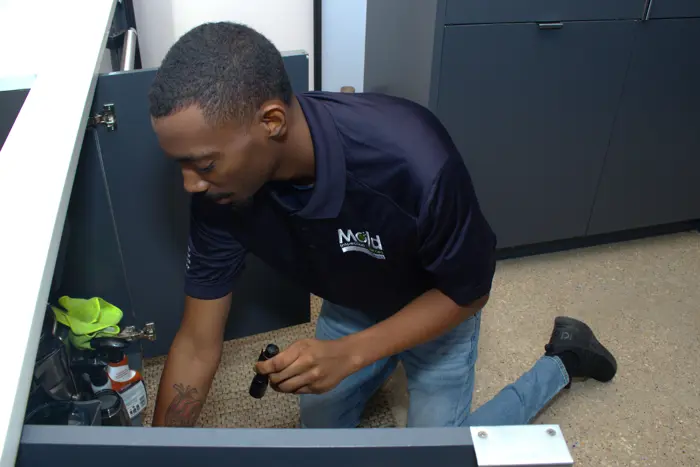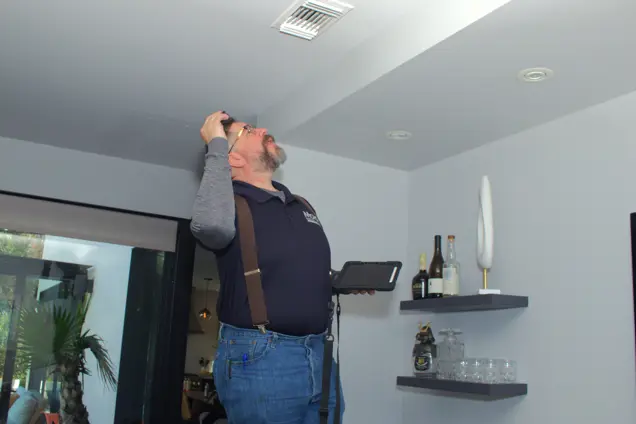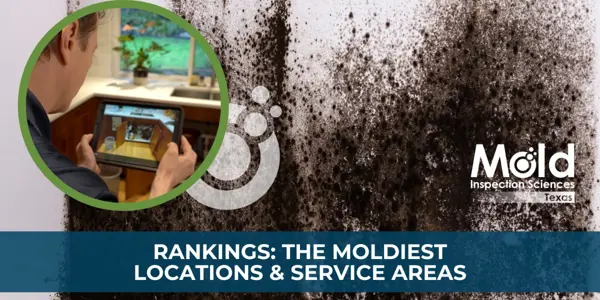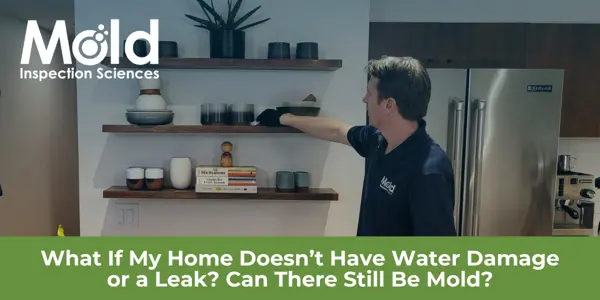What is Relative Moldiness?
Assessing Your Mold Risk by Comparing Outdoor vs. Indoor Mold Counts

When it comes to evaluating indoor air quality, particularly in the context of mold contamination, the focus often falls on the absolute count of mold spores. Based-on our experience, we recommend looking at relative moldiness instead. Why?
Understanding the relative moldiness of your home is an important factor in assessing the risk and potential health impacts of mold exposure. It can provide a more complete picture of your indoor air quality and the likelihood of ongoing mold growth issues. This is a regular topic of conversation amongst our team, and more specifically with clients. We aim to help them make better informed decisions about next steps and keep their properties safe and healthy.
In this post, we explore what relative moldiness is in more detail, why it matters so much, what steps you can take to better protect your home from the potential of mold, and more.

What is Relative Moldiness and Why Does it Matter?
Relative moldiness refers to the comparison of mold spore counts found indoors vs. outdoors. High relative moldiness indicates that the indoor environment is more conducive to mold proliferation compared to the outdoor environment. This can lead to continuous exposure to mold spores and mycotoxins, which may cause or exacerbate health issues such as allergies, asthma, and other respiratory conditions. On the other hand, low relative moldiness suggests that the indoor mold spore count is significantly lower than the outdoor count, indicating a lower risk of indoor mold growth.
Photo credit: Abysmalic / Canva Pro / License
For example, a recent inspection we completed showed an outdoor mold count of 17,000 and an indoor count of approximately 1000. This indicates low relative moldiness because the indoor count is much lower than the outdoor count. Conversely, other homes might have an indoor count of 200 and an outdoor count of less than 100, which indicates high relative moldiness and a higher potential for indoor mold problems. Even though the home in the first example had a low relative moldiness, it turned out to have a mold growth issue in a specific area, which was discovered using standard microbial testing. In this case, a microbial air sample. This highlights the importance of using relative moldiness as just one part of a comprehensive mold assessment.
Understanding relative moldiness helps homeowners and professionals make informed decisions about indoor air quality management and mold remediation efforts. It shifts the focus from absolute numbers to comparative risk, providing a more accurate assessment of mold exposure and its potential health impacts.
A Quick History on Relative Moldiness
Interestingly enough, the EPA developed the Environmental Relative Moldiness Index (ERMI), which tests for 36 mold species associated with two groups, water damage-related molds and common indoor molds, using DNA-based testing, known as MSQPCR (Mold Specific Quantitative PCR). MSQPCR is often used when developing a CIRS (Chronic Inflammatory Response Syndrome) protocol for individuals who are mold-sensitive.


An ERMI Score Should Always Be Used with Additional Data
Over the years, independent environmental specialists (IDPs) began to rely solely on the EMRI scores when evaluating homes instead of looking at the other contributing factors, such as individual mold types, concentration levels, relative humidity, etc. The ERMI score should be used as one tool in our arsenal to complete a comprehensive investigation. When used alone, an ERMI score has much less significance in determining what the most effective next steps should be. At Mold Inspection Sciences, we’ve compiled our own database based on thousands of average, normal, and high investigations, allowing us to give clients more detailed results and next steps. The bottom line is that qPCR data and individual mold types are invaluable evidence for a comprehensive investigation.
Read More About How We Use MSQPCR Sampling in Our InvestigationsDid you know that the American Academy of Allergy, Asthma & Immunology has a pollen- and mold-level tracker?
Click below and use the map feature to click on the station closest to your location.
I Have a High Outdoor Mold Count Where I Live—Should I Be Worried

Photo Credit: Vieriu Adrian / Canva Pro / License
Outdoor mold levels can vary significantly based on seasonal changes, weather conditions, and local vegetation. Relative moldiness accounts for these natural variations, making it a more reliable indicator of air quality over time and reducing false alarms caused by temporary outdoor mold spikes. So, while a high outdoor mold count means there are more spores in the air, this does not automatically translate to high indoor mold levels, but it does warrant extra precaution.
If your home is not well-sealed or has issues with moisture control, these outdoor spores can infiltrate your indoor environment and contribute to mold growth. It’s essential to take preventive measures to maintain good indoor air quality.

How to Prevent Indoor Mold Growth If You Live in an Area with a High Outdoor Mold Count
Preventing indoor mold growth in areas with high outdoor mold counts requires diligent moisture control and regular maintenance. Here are some effective strategies we recommend to help protect your indoor environment:
- Seal Entry Points: Make sure all windows, doors, and openings are properly sealed. This helps keep outdoor mold spores from getting inside your home.
- Use HEPA Air Purifiers: Install air purifiers equipped with HEPA filters in key areas of your home to trap mold spores and enhance indoor air quality effectively.
- Control Indoor Humidity: Keep indoor humidity levels between 30% and 50%. Use dehumidifiers and air conditioners to reduce moisture, especially in moisture-prone areas like basements and bathrooms.
- Ensure Adequate Ventilation: Maintain proper ventilation throughout your home. Use exhaust fans in bathrooms and kitchens to remove moisture-rich air and prevent mold growth.
- Fix Leaks Immediately: Promptly repair any leaks in your roof, walls, or plumbing. Quick action prevents water from accumulating and creating an ideal environment for mold.
- Clean Routinely: Regularly clean your home, especially in areas susceptible to moisture. This helps to eliminate mold spores and prevents mold from developing.
What to Do If You Think You Have a High Relative Mold Count
If you think you have a possible mold problem, the first step is to get in touch with a professional mold inspection company that can confirm your suspicions.
At Mold Inspection Sciences, our thorough process begins with an outdoor baseline reading to set the standard for comparison. We then conduct a comprehensive mold and moisture assessment using advanced moisture detection equipment and infrared technology. These tools help us uncover hidden moisture issues in your property's walls, floors, ceilings, and other materials—problems that are often invisible to the naked eye.
During our comprehensive inspection, we also tailor sampling recommendations based on your property's specific needs and our experts' findings. Sampling plays a crucial role in identifying the exact type and presence of mold or other environmental hazards. This step is essential for determining the most effective remediation strategy.


The Bottomline
Understanding and monitoring relative moldiness is essential for maintaining a healthy indoor environment. By comparing indoor mold levels to outdoor baselines, you can more accurately assess potential risks and take proactive steps to prevent mold-related issues.




